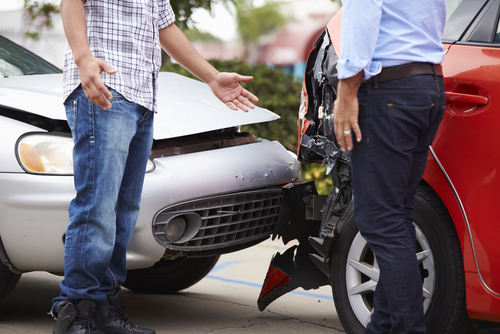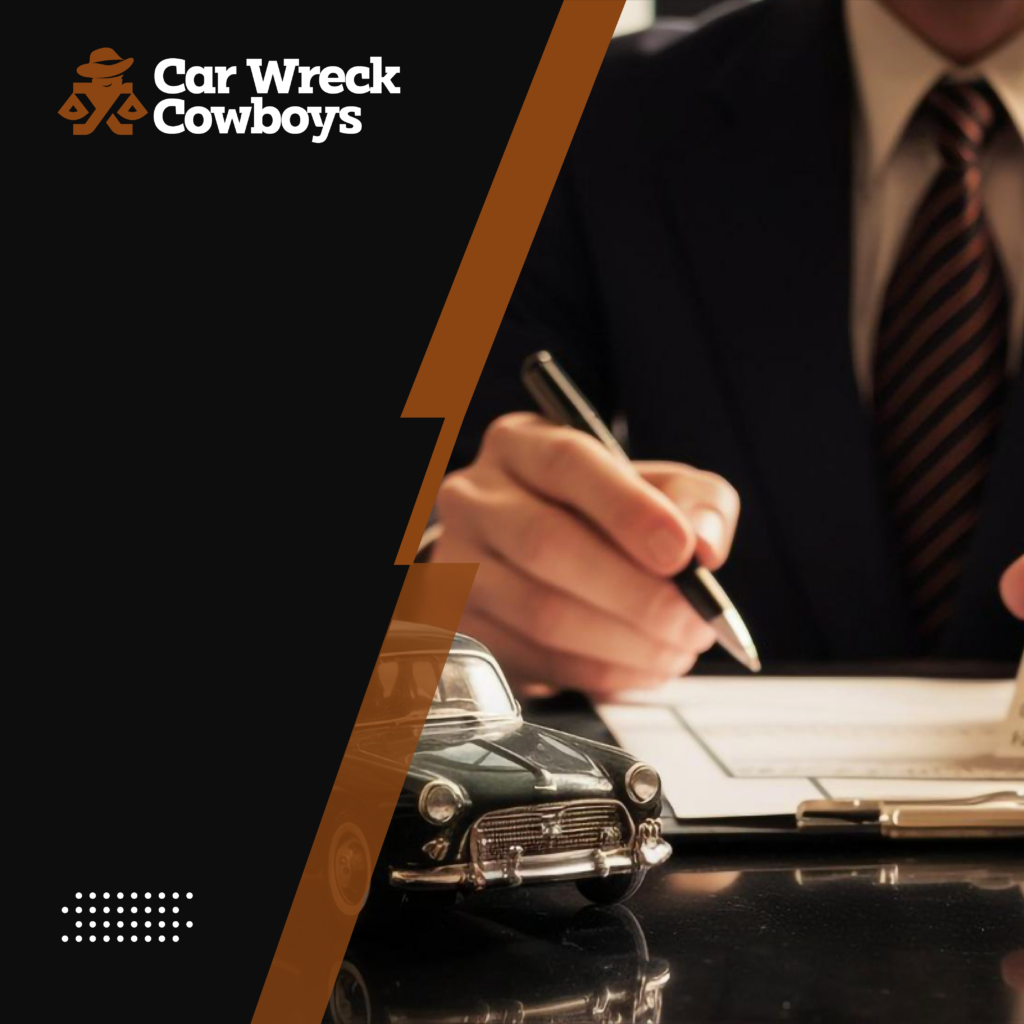Understanding Georgia’s Fault Laws in Multi-Vehicle Car Accidents

Multi-vehicle accidents, or pile-ups, can be devastating and legally complex. When multiple vehicles are involved in a collision, determining fault and liability becomes increasingly challenging, particularly in Georgia, where specific fault laws and liability guidelines apply. If you’ve been involved in a multi-car accident in Georgia, understanding how fault is determined and what steps to take can make a big difference in securing compensation and protecting your rights.
In this guide, we’ll break down Georgia’s fault laws for multi-vehicle accidents, explain how fault is assigned, and provide actionable steps for those involved in a pile-up.

1. Georgia’s At-Fault System Explained
Georgia operates as an at-fault state for car accidents, meaning that the person responsible for the accident is liable for the damages and injuries caused. This system contrasts with no-fault states, where each driver’s own insurance covers their damages regardless of fault.
In an at-fault state like Georgia, the insurance company of the at-fault driver(s) is responsible for compensating the victims for their damages. This system can lead to disputes, especially in multi-vehicle accidents where determining fault is more complex.

2. Comparative Negligence in Georgia
Georgia follows the rule of modified comparative negligence in assigning fault in multi-vehicle accidents. Here’s how it works:
- Modified Comparative Negligence allows drivers to recover damages even if they are partially at fault for the accident, as long as they are less than 50% responsible.
- Proportional Fault Reduction: If a driver is found partially responsible, their compensation is reduced by their percentage of fault. For example, if you are 20% at fault in a multi-vehicle accident and your damages total $10,000, you would receive $8,000 after a 20% reduction.
In pile-up accidents, where multiple vehicles may be responsible, determining the exact percentage of fault for each driver can be challenging, but this is crucial as it impacts the amount of compensation each party is eligible to receive.

3. How Fault is Determined in Multi-Vehicle Accidents
Assigning fault in multi-vehicle accidents requires thorough investigation, evidence gathering, and sometimes witness testimony. Typically, fault is determined by examining:
- The position of each vehicle at the time of impact
- Damage patterns and collision points on the vehicles
- Traffic laws and regulations relevant to the accident
- Eyewitness statements and accounts of the accident
For instance, in a rear-end collision where a car is pushed forward into another vehicle, fault could be assigned to the first driver who initiated the chain reaction. However, each vehicle’s role in the collision is considered carefully, and there may be shared or overlapping liability between several drivers.

4. Common Scenarios in Multi-Vehicle Accidents
Multi-vehicle accidents often arise from chain reactions where one driver’s actions set off a series of collisions. Here are some common multi-car accident scenarios and how fault may be assigned:
- Chain Reaction Rear-End Collision: If a car rear-ends another, causing that car to collide with a third vehicle, fault may lie primarily with the first car. However, if subsequent drivers were following too closely or speeding, they could share some of the blame.
- Intersection Accidents: In cases where multiple vehicles enter an intersection and collide, fault could be divided based on who had the right of way, who ignored signals, or who was speeding.
- Highway Pile-Ups: Highway pile-ups are often caused by a combination of factors, such as sudden stops, weather conditions, and distracted driving. In these cases, fault can be split between drivers who contributed to the dangerous conditions that led to the accident.
Understanding fault in each of these scenarios requires careful analysis and, often, the expertise of accident reconstruction professionals.

5. The Role of Police Reports in Multi-Vehicle Accidents
A police report is critical in multi-vehicle accidents, as it includes the initial observations of the responding officer. Police reports often include details such as:
- Statements from involved drivers and witnesses
- Descriptions of the accident scene
- Diagrams showing vehicle positions and damage
- Officer’s preliminary assessment of fault
While the police report does not automatically determine fault in a legal sense, it serves as a key piece of evidence that insurance adjusters and attorneys may rely on when building a case.

6. Gathering Evidence at the Scene
After a multi-car accident, gathering evidence can be challenging, but any information you collect could be crucial. Here’s what you should do, if you’re able:
- Take photos of vehicle damage, skid marks, road signs, and weather conditions.
- Obtain contact information for all drivers, passengers, and witnesses.
- Get the names and badge numbers of the responding officers and request a copy of the police report.
In Georgia, it’s crucial to document as much as possible, as evidence becomes the foundation for proving your case or defending against claims from other parties.

7. Filing Insurance Claims in a Multi-Vehicle Accident
In a multi-vehicle accident, filing claims can be complicated as multiple insurance companies are involved. Here’s how to approach the process:
- Notify your insurance company: Even if you believe you’re not at fault, your insurance company needs to be informed.
- File a claim with the at-fault driver’s insurance: You may file claims against the insurance of any drivers deemed responsible for the accident.
- Prepare for fault disputes: Insurance companies may investigate extensively and may try to assign fault to other drivers to minimize their payout. It’s essential to present all evidence and support your claim.
Multi-vehicle accident cases can quickly become contentious, as each insurance company may aim to protect its own interests.

8. Working with Car wreck cowboys
Hiring Car Wreck Cowboys can make a significant difference in navigating the claims process and recovering fair compensation. Here’s how Car Wreck Cowboysr can help:
- Evidence Collection: An attorney can coordinate with experts, such as accident reconstructionists, to build a strong case.
- Negotiating with Insurance Companies: A lawyer can manage discussions with multiple insurers, ensuring that you don’t accept a lowball offer.
- Representation in Court: If your case goes to trial, having legal representation can strengthen your position and increase your chances of success.
In complex multi-vehicle accidents, Car Wreck Cowboys’ guidance is invaluable.

9. Georgia’s Statute of Limitations
It’s essential to keep Georgia’s statute of limitations in mind when dealing with any car accident claim. In Georgia, you typically have two years from the date of the accident to file a personal injury lawsuit. Missing this deadline can prevent you from seeking compensation, so make sure to act promptly.

10. Steps to Take to Protect Yourself After a Multi-Vehicle Accident
If you’re involved in a multi-vehicle accident in Georgia, follow these steps to protect your rights:
- Seek medical attention: Prioritize your health by getting checked for injuries immediately.
- Document the accident scene: Take photos and gather as much information as possible.
- Report the accident to your insurer: Notify your insurance company and provide a clear account of what happened.
- Seek legal counsel: Car Wreck Cowboys can help you understand your options and guide you through the legal complexities of a multi-car accident.

Conclusion: Protecting Your Rights After a Multi-Vehicle Accident in Georgia
Multi-vehicle accidents are complex and often involve multiple parties and insurance companies. Georgia’s fault laws and comparative negligence rules can make it difficult to determine fault and obtain fair compensation. Knowing how to document the scene, gather evidence, and work with legal experts can make a significant difference in protecting your rights and achieving a favorable outcome.
If you’ve been injured in a multi-vehicle accident, consulting with an experienced car accident lawyer, like the team at Car Wreck Cowboys, can provide you with the support and expertise you need to navigate the process and maximize your compensation.






